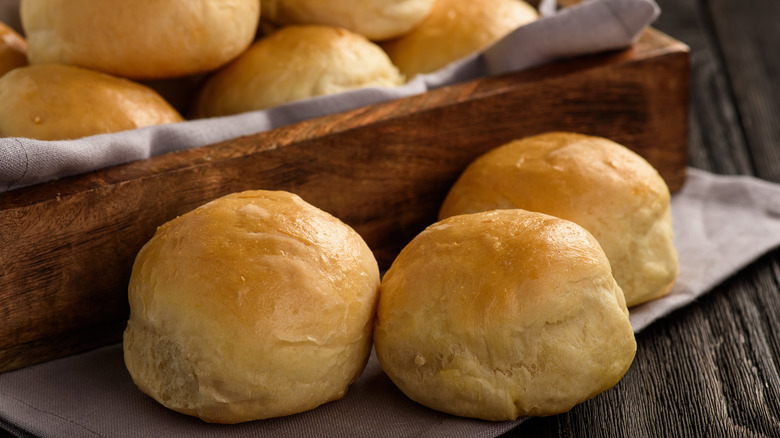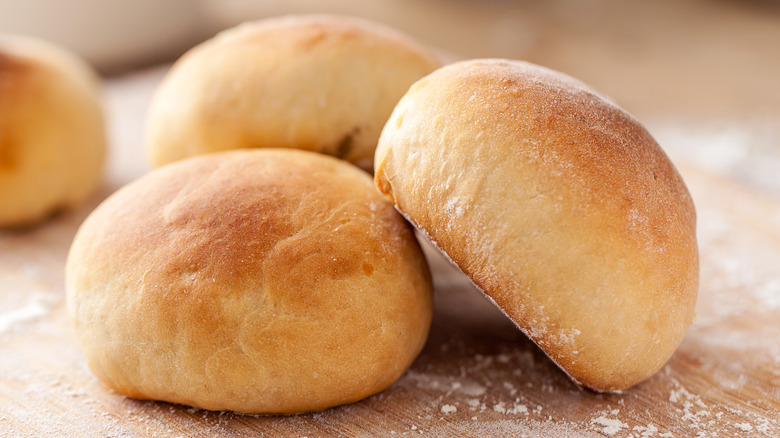What Are Potato Rolls, Really?
If you've ever wondered about the difference between your run of the mill dinner roll and a potato roll, we can tell you that it isn't just potatoes. Potato rolls are a traditional Pennsylvania Dutch method of baking bread that includes the addition of potatoes, whether they're boiled and mashed, or dehydrated and ground into granules (producing what we call potato flour). Whatever the form, all potato roll recipes require some portion of regular wheat flour to be replaced with potato.
What does potato flour do that regular wheat flour can't? Well, it gives the rolls a softer texture and sweeter taste than traditional bread rolls as well as their rich, buttery yellow color. Because of potato flour's ability to hold moisture, rolls made with it tend to be more moist. In addition, the gluten-free flour lends a characteristic earthy sweetness as well as a crisp crust.
Potato bread around the world
Potato bread is baked the world over and consequently goes by many different names. In Ireland it is called slims, fadge, or tatie bread. In Germany, kartoffelbrot is a variation that is usually made with spelt and rye. One of the most popular breads in Chile (Chiloe island specifically) is known as Chapalele, which is typically steamed but can also be pan-fried or baked. Potato bread is versatile and is a beloved American staple at holiday dinner parties.
The first potato bread was created by a French pharmacist in the late 18th century. Because potatoes are easily grown compared to wheat, it made the addition of potato an elegant solution to the lack of wheat flour in leaner times. But potatoes don't just give bread a more pleasing texture and richer flavor, it makes the bread more nutritionally rich. Potato rolls are higher in fiber and nutrients making it a more calorically dense bread option. Additionally, potato breads are also baked with enriched wheat flour, which means that they contain B-vitamins and folic acid.

